Gentari and EV Connection (EVC / JomCharge) have introduced several new enhancements to their EV charging locations which are assisted by the Battery Energy Storage System (BESS). Equipped with batteries and solar panels, these EV charging stations are designed to overcome limited power capacity issues at EV charging deserts along the highway.
So far they have deployed four BESS-assisted EV charging stations along PLUS highway and there are some notable challenges mainly due to how these chargers are being used. To ensure a smoother experience for more EV users, Gentari and JomCharge have introduced several new enhancements which include a new EV charging cap.
BESS-assisted EV chargers are deployed in areas with low power supply capacity but there are limitations
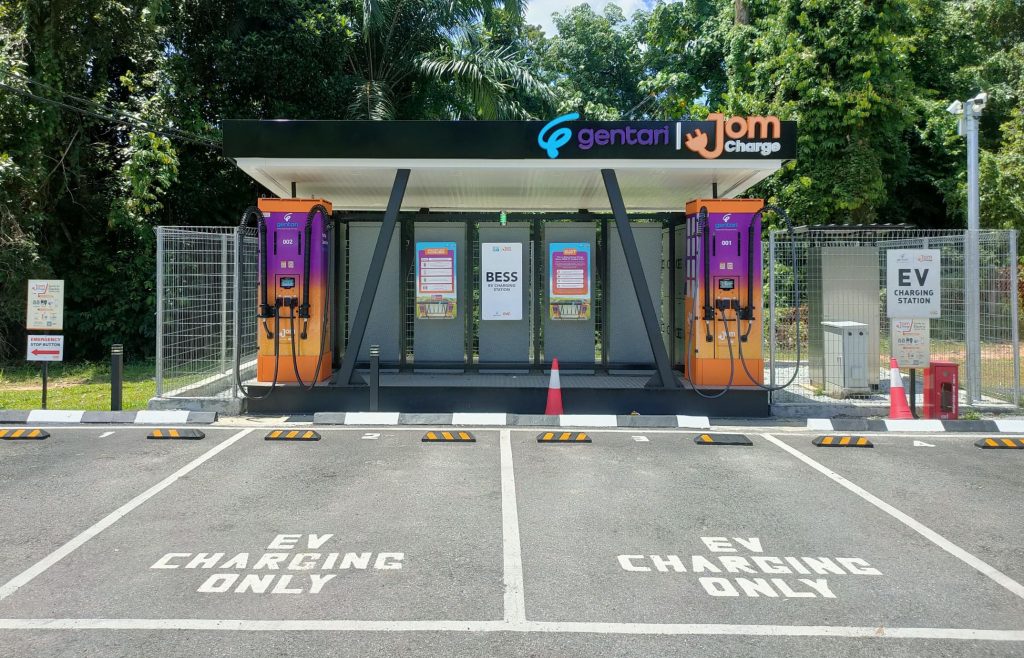
EVC explained that many areas across Malaysia are strategically located for EV charging but they lack the necessary electricity supply to power an actual EV charging station. Typically these locations are R&Rs and laybys on the highways with only sufficient electricity to power small-scale usage amenities such as restaurants and kitchens.
The BESS which acts like a “water tank” can utilise the limited power supply to trickle charge the battery until it is full, enabling the site to offer DC fast charging. Each time an EV is plugged in to charge, the stored energy is “flushed-out” and the battery will continue to trickle charge from the grid and solar.
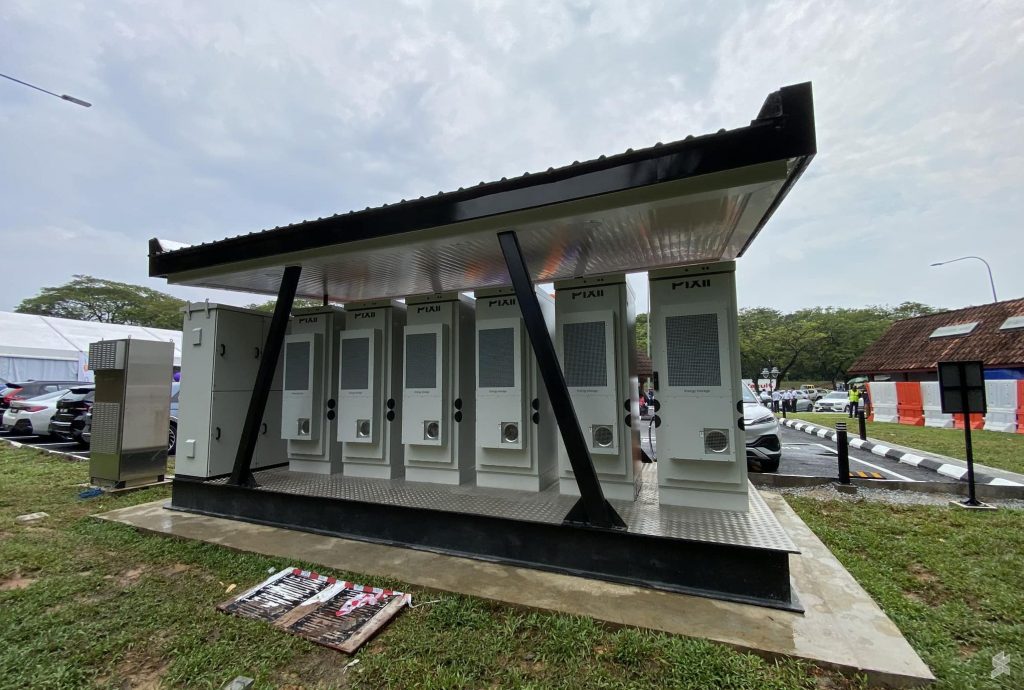
Obviously, the ability to deliver DC fast charging depends on the stored battery capacity which is finite. Most of these BESS-assisted EV charging stations like the one at Behrang Southbound Layby are equipped with a 300kWh capacity. If six EVs charge 50kWh back to back, the BESS would be depleted completely and the EV charging location will be suspended until it recharges back with sufficient state of charge (SoC).
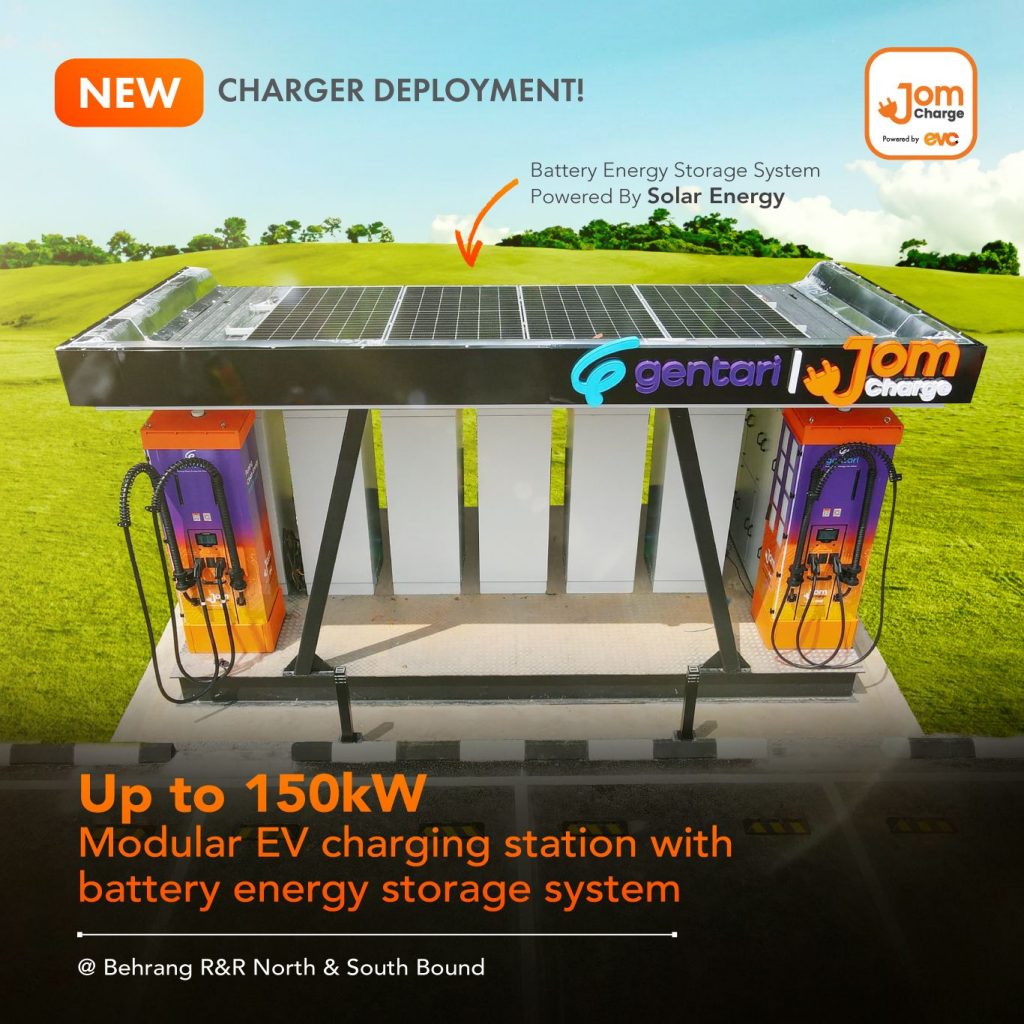
EVC said this was not a problem previously when the EV industry was still in its early stages. However, with more EVs hitting Malaysian roads (142% growth for EV registrations in H12024), the BESS gets depleted more frequently during festive seasons or long weekends.
To address the issue, an 80% SoC cap has been introduced at Behrang Layby for both Northbound and Southbound directions as part of their beta phase. This means these EV chargers will automatically stop charging when your EV reaches 80% SoC and the move would allow sufficient energy supply to charge more vehicles.
The 80% cap will eventually be introduced to other BESS EV charging locations such as Senawang Northbound and Southbound, as well as other future BESS-assisted charging sites that are expected to be deployed very soon.
Why are these chargers capped at 80%?
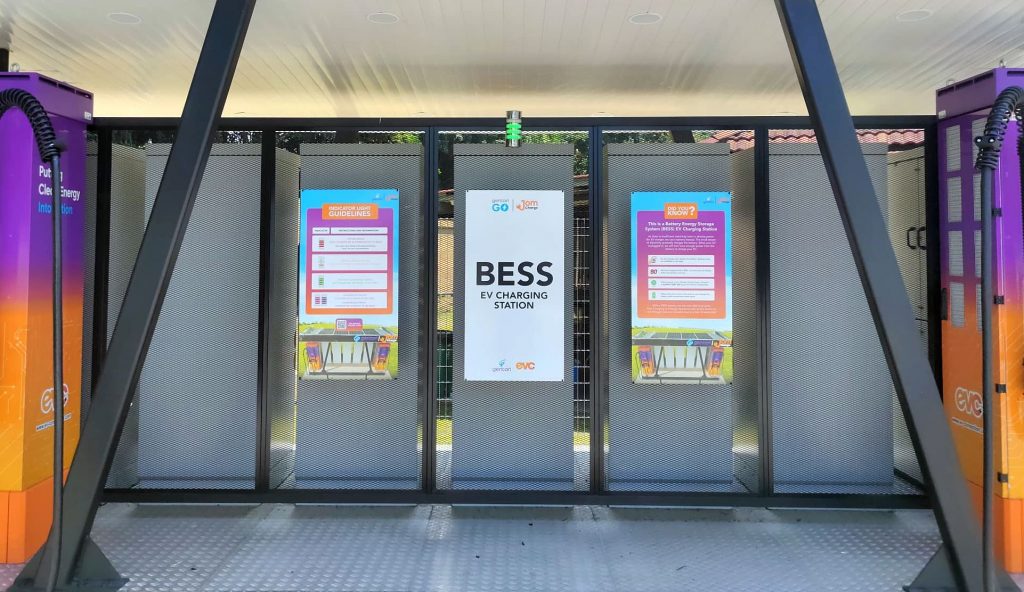
80% SoC cap is essentially a “Fair Usage Policy” of sorts as it enables more users to charge from a finite supply of energy.
If each EV were to charge 30kWh each, a fully charged 300kWh BESS would technically be able to charge 10 EVs back to back, versus just 6 EVs if each EV were to charge up to 50kWh.
It is also worth pointing out that these BESS-assisted chargers are priced at RM1.60 per kWh, which is slightly more expensive than other DC chargers deployed by Gentari and JomCharge.
In some locations, the next available EV charger is located within the next 20km. For example, Ulu Bernam R&R is located 16.4km south of Behrang Lay-by Southbound while Tapah R&R is located 51km north of Behrang Bay-by Northbound.
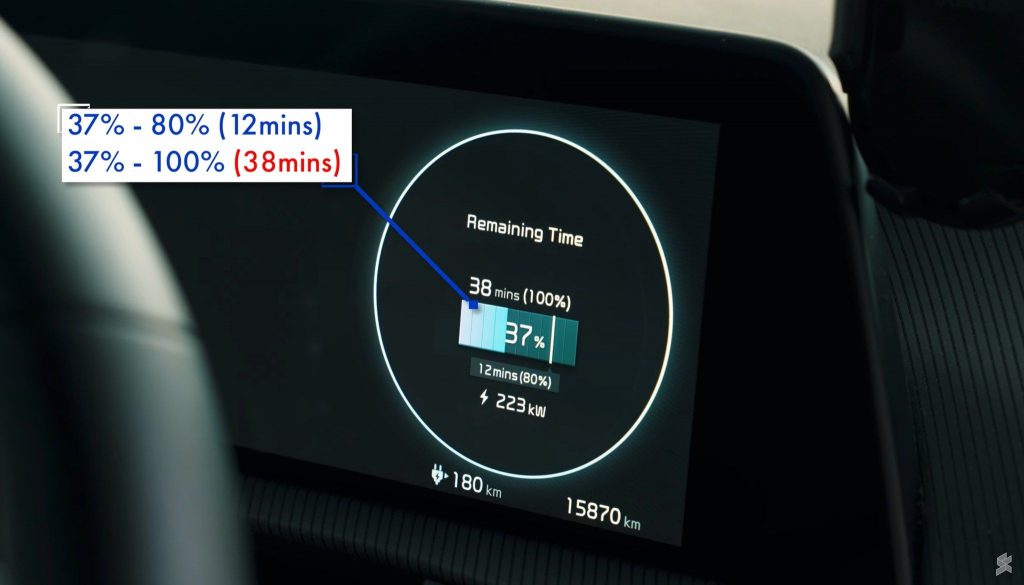
Another reason why you should avoid charging your EV beyond 80% is the longer wait time. You shouldn’t be treating an EV like a petrol car where the norm is to pump a full tank all the time.
The EV charging rate will drop significantly after the battery SoC has reached 80%. As indicated above, charging from 37-80% takes just 12 minutes on a Kia EV6 but to charge from 80-100% takes an additional 26 minutes.
If you want a quick EV charging stop, it is always better to stop charging at 80% and continue driving until you need to charge again. It is a waste of time to wait for an extra 30 minutes just for the final 20%. If you have an EV with over 500km of real-world range, 80% charge should be more than enough to reach most destinations.
Users can check BESS battery levels from Gentari Go and JomCharge app
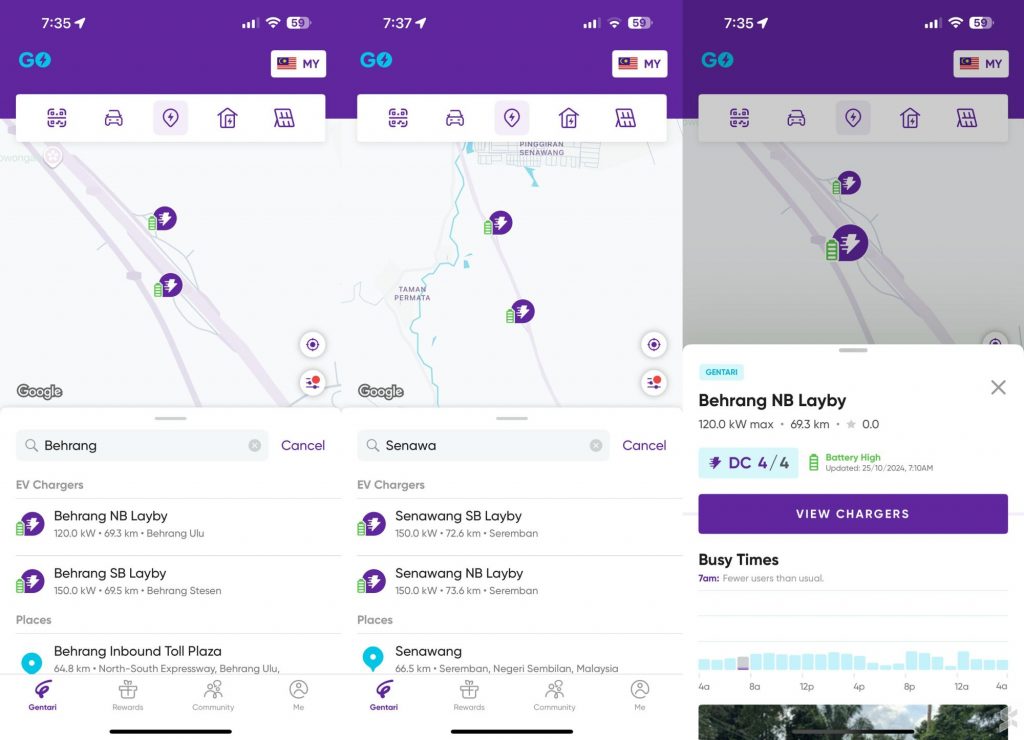
If you’re unsure if a BESS-assisted EV charging location has sufficient energy left, you can now check the battery status on your smartphone. The JomCharge app added BESS level indicators last month for both Behrang and Senawang locations (Northbound and Southbound), and a similar feature was also introduced on the Gentari Go app with the latest update.
Gentari Go now has a new Busy Times indicator which allows users to check and get a better picture of how busy the EV charging location could be for better planning.
So what happens when the BESS battery is low? According to EVC they have introduced a new feature at these BESS-assisted EV chargers which allows users to charge their EV even when the battery depletes to an almost empty level.
With the latest upgrade, the BESS still stop recharging and it will channel all residual energy in the battery along with grid energy and energy from the solar panels to a single charger. When this happens, only one charger at the location can be utilised but at a lower and usable rate of up to 50kW. The BESS battery will resume recharging after the sole EV leaves and the station is empty.
If you’re planning to travel long-distance, you can check out our EV long-distance driving guide below:
You can’t charge your EV beyond 80% at these Gentari and JomCharge EV chargers. Here’s why
News Reports PH
0 Comments